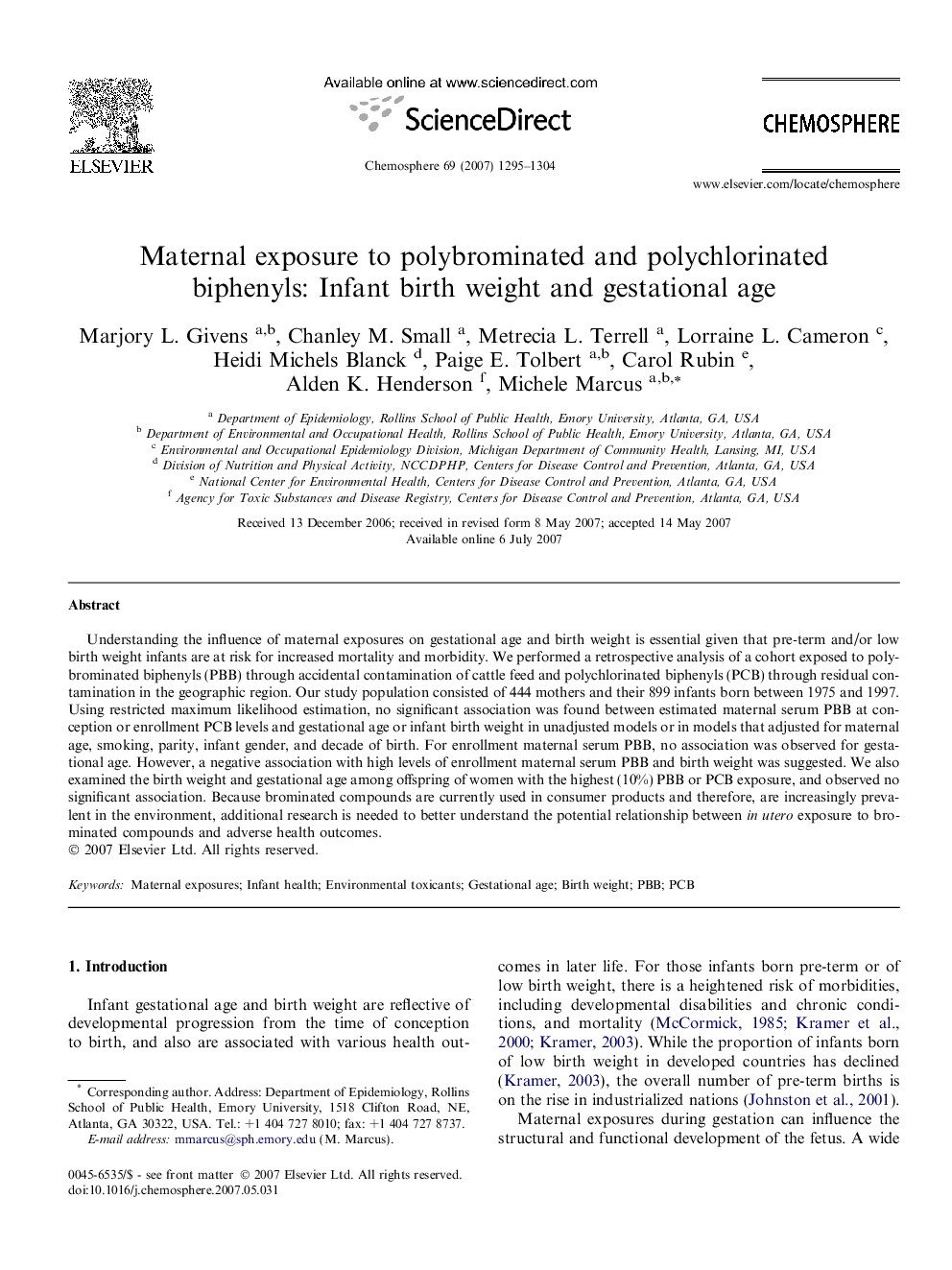| Article ID | Journal | Published Year | Pages | File Type |
|---|---|---|---|---|
| 4414661 | Chemosphere | 2007 | 10 Pages |
Abstract
Understanding the influence of maternal exposures on gestational age and birth weight is essential given that pre-term and/or low birth weight infants are at risk for increased mortality and morbidity. We performed a retrospective analysis of a cohort exposed to polybrominated biphenyls (PBB) through accidental contamination of cattle feed and polychlorinated biphenyls (PCB) through residual contamination in the geographic region. Our study population consisted of 444 mothers and their 899 infants born between 1975 and 1997. Using restricted maximum likelihood estimation, no significant association was found between estimated maternal serum PBB at conception or enrollment PCB levels and gestational age or infant birth weight in unadjusted models or in models that adjusted for maternal age, smoking, parity, infant gender, and decade of birth. For enrollment maternal serum PBB, no association was observed for gestational age. However, a negative association with high levels of enrollment maternal serum PBB and birth weight was suggested. We also examined the birth weight and gestational age among offspring of women with the highest (10%) PBB or PCB exposure, and observed no significant association. Because brominated compounds are currently used in consumer products and therefore, are increasingly prevalent in the environment, additional research is needed to better understand the potential relationship between in utero exposure to brominated compounds and adverse health outcomes.
Related Topics
Life Sciences
Environmental Science
Environmental Chemistry
Authors
Marjory L. Givens, Chanley M. Small, Metrecia L. Terrell, Lorraine L. Cameron, Heidi Michels Blanck, Paige E. Tolbert, Carol Rubin, Alden K. Henderson, Michele Marcus,
